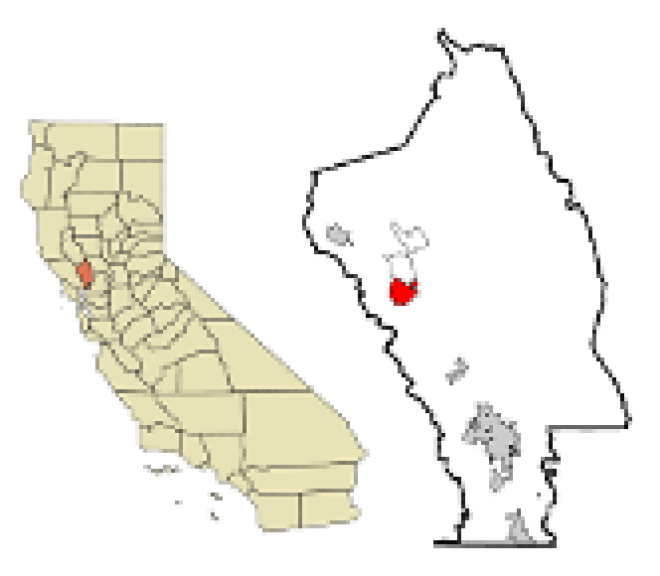Saint Helena, CA Local Info

St. Helena is a picturesque town full of history, glamor, and world-class vineyards. The city itself exudes a quaint charm, with Main Street serving as a hub of activity. Boutique shops, art galleries, and gourmet eateries line the bustling thoroughfare, offering ample opportunities for leisurely strolls and indulgent culinary experiences.
St. Helena is home to iconic wineries such as Duckhorn Vineyards, Newton Vineyard, Charles Krug Winery, where oenophiles can savor exquisite wines amidst picturesque vineyard settings. Landmark Beringer Vineyards, one of the oldest continuously operating wineries in Napa Valley, further cement the city's reputation as a premier destination for wine enthusiasts.
St. Helena is conveniently located within driving distance from major cities such as San Francisco and Sacramento. The most popular way to reach St. Helena is by car. Private transportation services, such as limousines or private shuttles, offer a convenient and luxurious option for travelers seeking a stress-free journey to St. Helena. These services can be arranged in advance for seamless transportation from nearby airports or hotels.
While public transportation options to St. Helena are limited, visitors can take advantage of regional bus services or ride-sharing platforms for convenient access to the town. Additionally, the Napa Valley Wine Train offers a unique and scenic way to experience the beauty of Napa Valley while traveling to St. Helena. Departing from downtown Napa, the train journey to St. Helena showcases breathtaking vineyard views, gourmet dining, and wine tastings at select wineries along the route.
The roots of St. Helena trace back to its indigenous inhabitants, the Wappo people, who settled in the area thousands of years ago. Known to the Wappo as Anakotanoma, or 'Bull Snake Village', the region likely derived its name from the nearby Mount St. Helena—a majestic peak in the Mayacamas Mountains with flanks spanning Napa, Sonoma, and Lake counties.
Mount Saint Helena, initially known as Kanamota ("Human Mountain") by the Wappo people and later dubbed Mount Mayacamas by Spanish colonists, was renamed in 1841 after a party of Russians from Settlement Ross on Sonoma shores came to explore the area. Led by Elena Gagarina, wife of Alexander Rotchev, the commanding officer of Fort Ross, the expedition ascended the peak and left behind a copper plate inscribed with the date of their visit. It is speculated that Gagarina bestowed the mountain with its current name in honor of her patron saint.
However, St. Helena's legacy as a resort destination dates back to the discovery of White Sulphur Springs in 1848. Affluent San Franciscans flocked to the area by steamer and stagecoach, seeking rejuvenation and relaxation amidst the natural beauty of the region.
Founded in 1855 by Henry Still, St. Helena flourished as a community with the establishment of schools, churches, and cultural institutions. The Carnegie library, built in the early 20th century, alongside other historic landmarks stand today as a testament to the city's commitment to cultural preservation.
With its rich history, picturesque landscapes, and world-class wineries, St. Helena offers visitors a truly unforgettable experience. From wine tastings and food festivals to art fairs and music concerts, there's always something exciting happening in St. Helena.
While here, make sure to visit the Culinary Institute of America at Greystone. Housed within the historic Greystone Cellars, which was originally built as a winery in 1889, the Institute offers an unparalleled culinary experience that blends tradition, innovation, and excellence.
Deer Park is a very short drive from the charming town of St. Helena, and offers visitors an opportunity to immerse themselves in a wealth of experiences that celebrate nature, culture, and the region's renowned wine country.
Explore nearby boutique wineries and vineyards that dot the picturesque landscape of Deer Park. Sample a diverse selection of world-class wines, including rich Cabernet Sauvignons and elegant Chardonnays, while taking in panoramic views of the surrounding vineyards.
The nearby Castello di Amorosa, for instance, stands as a majestic symbol of European charm and winemaking tradition. This medieval-style Tuscan castle winery captivates visitors with its stunning architecture, rich history, and world-class wines, creating an unforgettable experience reminiscent of a bygone era.
Just a few miles away is Bale Grist Mill State Historic Park and the Culinary Institute of America (CIA) at Greystone are definitely worth the visit.